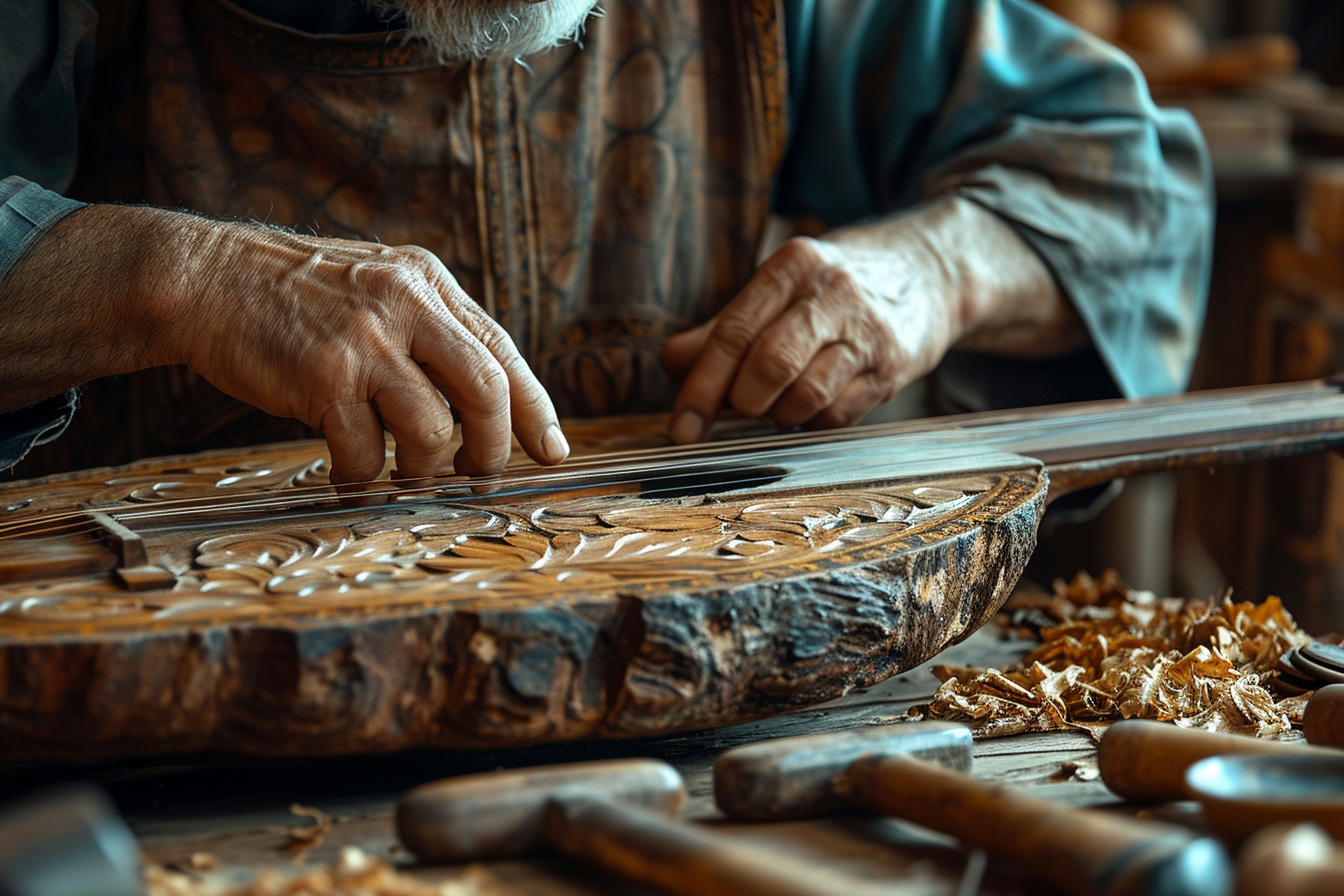
The saz, a stringed musical instrument, is an integral part of the traditional music of the Middle East, particularly in Turkey, Iran, and the surrounding regions. Its distinctive sounds carry the cultural heritage of these areas and the intricate melodies it can produce, resonate deeply with many music enthusiasts. Choosing a saz is an intricate process that requires attention to detail and a deep understanding of the instrument’s characteristics. This guide delves into the criteria that should be considered when selecting a saz to ensure musicians, be they novice or professional, acquire an instrument well-suited to their needs.
Understanding the types of saz
Before making a decision, one should be familiar with the different types of saz. The sizes and shapes vary significantly, and this will influence the sound, playability, and suitability for each musician’s specific needs. The most common variations include the Cura, the smallest in size, ideal for higher-pitched tunes, the Baglama, the most popular medium-sized saz, and the Divan, a larger saz known for its deep tones.
Key Considerations in Selecting a Saz
Selecting a saz is more than just choosing a musical instrument; it’s about finding a companion for musical expression. Individuals must consider an array of factors to make an informed selection.
Craftsmanship and materials
The quality of craftsmanship is pivotal in selecting a saz. An expertly crafted saz not only looks beautiful but also ensures durability and excellent sound quality. Woods such as mahogany, maple, walnut, and mulberry are commonly used in saz construction and each offers a unique tonal property.
Bowls and Soundboards: The bowl’s material and shape profoundly impact the resonating qualities of the instrument. The soundboard, typically made from spruce or cedar, is crucial for its ability to transfer the vibrations and enhance the richness of the sound.
Neck and Fingerboard: The neck’s rigidity and the fingerboard’s smoothness facilitate ease of play and contribute to the instrument’s overall tonality.
Tuning Pegs and Strings: High-quality tuning pegs ensure the saz stays in tune, while the strings’ material significantly affects the sound’s brightness and lifespan.
Size and playability
Understanding Scale Length: The length between the nut and the bridge, known as the scale length, is responsible for the pitch and tension of the strings. A longer scale produces deeper tones, whereas a shorter one enables higher pitches.
Assessing Tension and Action: The string tension and the action, or the distance between the strings and the fingerboard, must be comfortable for the player’s hands. This affects the ease with which a player can perform intricate finger techniques essential to saz music.
Evaluating Comfort and Ergonomics: The saz should fit comfortably when held and played. Its weight distribution and the player’s ability to access the full range of the fingerboard without strain are substantial factors.
Sound quality and resonance
The saz’s resonance and sustains largely determine its sound quality. A well-built saz will have a clear, continuous sound with a warm, woody tone.
Identifying the Saz’s Voice: Each saz possesses a unique voice characterized by its timbre and overtones. Listening to various instruments can help distinguish these subtle differences and identify which voice resonates with the player’s preferences.
Inspecting the Dynamic Range: A superior saz should offer a vast dynamic range, allowing the musician to expressively modulate between soft and loud passages.
Analyzing the Clarity of Notes: Crisp and precise notes, free from buzzing or muting, are indicative of a saz that has been properly constructed and well-set-up.
Aesthetics and personal taste
Aesthetics play a role in the selection of a saz, touching on the musician’s personal connection with the instrument. Intricate inlays, carvings, and other decorative elements can make the instrument unique and appealing on a personal level.
Considering Visual Appeal: An instrument that is visually appealing can inspire the musician and foster a deeper bond with the instrument.
Individual Preferences in Style: Traditional versus modern, plain versus ornate—personal style preferences should align with the instrument’s appearance to ensure a satisfying choice.
Cultural authenticity and traditional construction
The Importance of Heritage: For many, the saz is not merely an instrument but a representation of cultural identity. Therefore, selecting a saz that embodies traditional craftsmanship can be a way to preserve and honor cultural heritage.
Traditional Techniques and Materials: Opting for a saz made with traditional techniques and materials can ensure an authentic sound and playing experience that is reflective of the instrument’s rich history.
Where to purchase a saz
Choosing where to buy a saz is as crucial as the selection criteria. Whether opting for an in-person purchase at a specialty music store or considering reputable online dealers, the source can influence the availability of quality options and access to expert advice.
In-Person shop visits
Advantages of Physical Examination: Visiting a shop in person allows for a hands-on evaluation. Feeling the instrument, hearing its sound, and assessing its ergonomics can only be experienced firsthand.
Interaction with Specialists: Speaking directly with knowledgeable staff can provide invaluable insights into the selection process. They can advise on the particularities of each instrument and assist in finding the perfect match.
Online purchases
Broader Selection: Online platforms often offer a wider range of instruments, giving buyers access to diverse options they might not find locally.
Considerations for Online Buying: Detailed descriptions, high-quality images, and customer reviews aid in evaluating an instrument’s quality. However, the inability to physically inspect the saz before buying is a trade-off to consider.
Final steps in choosing a saz

Professional setup
A professional setup is strongly recommended post-purchase. Adjusting the action, fine-tuning the bridge, and ensuring optimal string tension are tasks best handled by experienced luthiers.
Benefits of a Professional Setup: A professional setup can transform a good saz into an exceptional one by optimizing it for the best possible sound and playability.
Post-Purchase care and maintenance
An ongoing commitment to the care and maintenance of the saz will prolong its life and preserve its sound quality.
Cleaning and Storage: Proper cleaning after use and safe storage in a case with appropriate humidity levels are essential practices.
Regular String Changes: Regular string changes and attention to the saz’s wood and varnish will keep it in top condition.
Monitoring for Repairs: Being vigilant for any signs of wear or damage can prevent small issues from becoming major concerns.
A journey worth taking
Choosing a saz is a journey that leads to a deeper connection with the instrument and its cultural roots. The thoughtful consideration of craftsmanship, materials, playability, sound quality, aesthetics, and culture will ultimately guide individuals to the instrument that complements their musical voice and style.
The saz selection process is an opportunity to embrace the nuances of traditional music-making. Aspiring saz players are invited to immerse themselves in the experience, seeking an instrument that not only portrays their musical aspirations but also becomes an extension of their creative expression. Step by step, the process of selection unveils the beauty and complexity that lies within each saz, offering a transformative experience for those who undertake this musical quest.